Pavilions offer a captivating intersection of creativity, innovation, and architecture, where temporary structures serve as both artistic statements and functional spaces for dialogue. These immersive environments often push the boundaries of materials, technology, and design thinking, inviting visitors to explore new ideas, challenge conventions, and experience the future of architecture and design in real-time. Whether crafted from reclaimed materials or shaped through cutting-edge digital fabrication, pavilions are a showcase of the latest advancements in design.
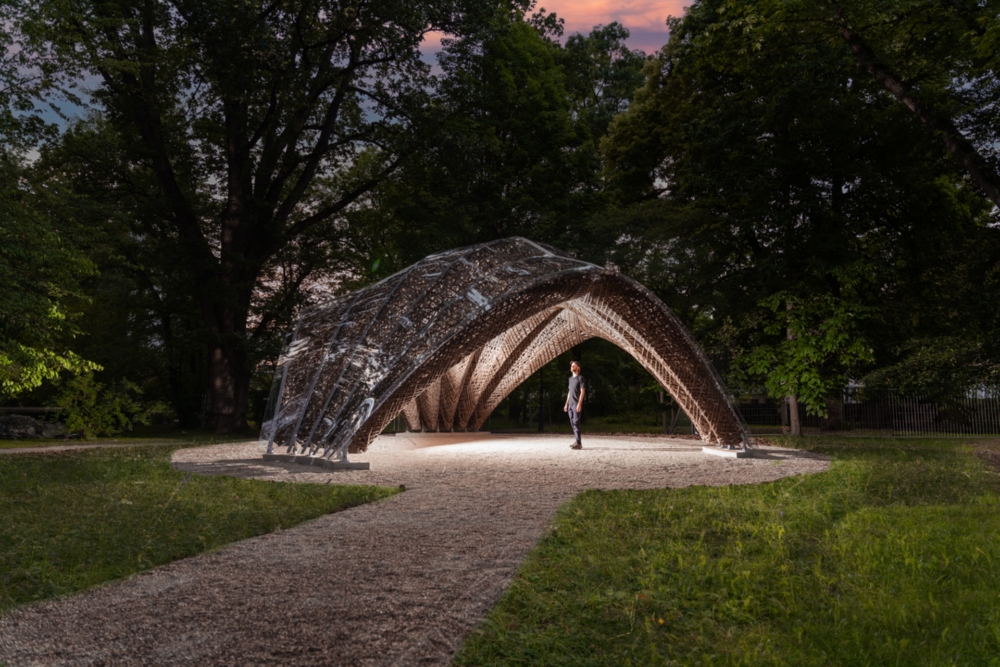
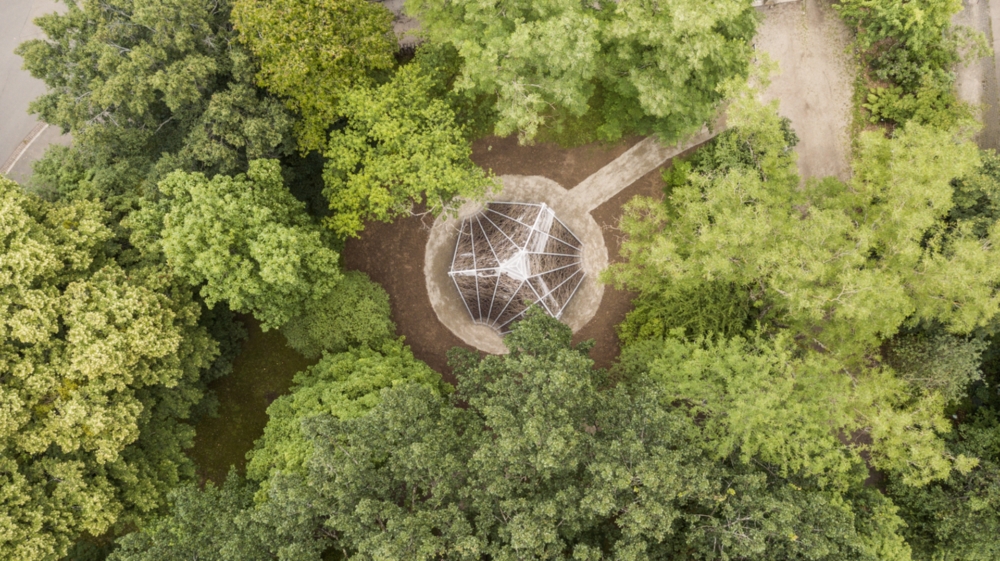
LivMatS Pavilion (also header image)
A team of architects, engineers, and biologists from the University of Freiburg and the University of Stuttgart has unveiled the world’s first building with a load-bearing structure made entirely from robotically wound flax fiber. The LivMatS Pavilion, located in the botanical garden at the University of Freiburg in Germany, merges natural materials with cutting-edge digital technologies, offering a glimpse into more sustainable construction methods.
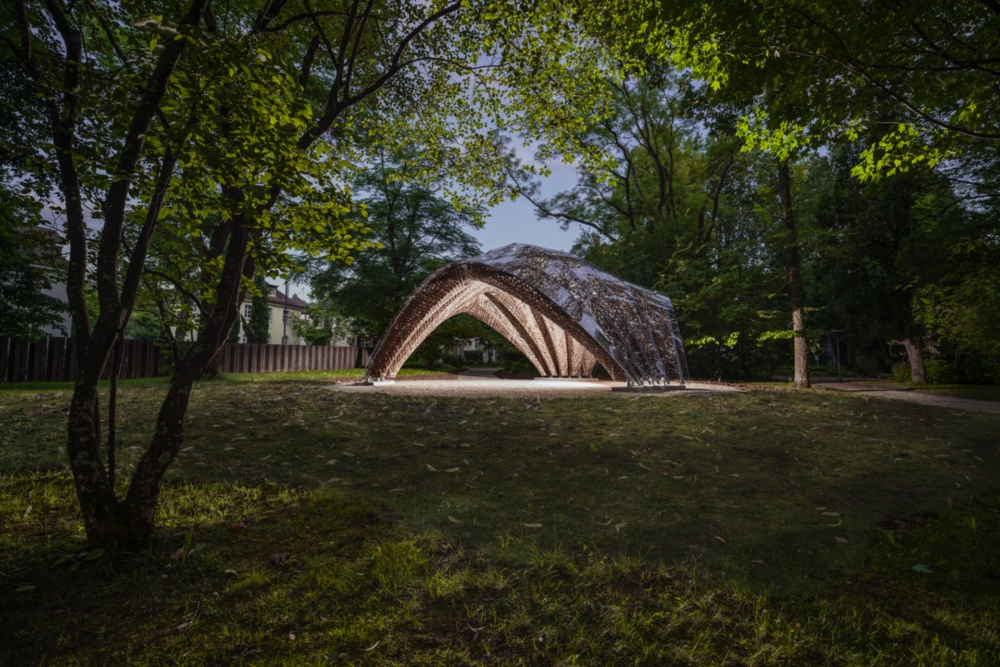
LivMatS Pavilion
Drawing inspiration from natural forms, the temporary pavilion is made up of 15 coreless components, each prefabricated from flax fiber. This fiber is robotically wound into a precise truss structure, complete with corner reinforcements and structural bracing. The innovative construction system offers dual benefits: the flax fiber is a fully renewable, biodegradable, and locally sourced material, while the robotic fabrication process ensures no material is wasted.
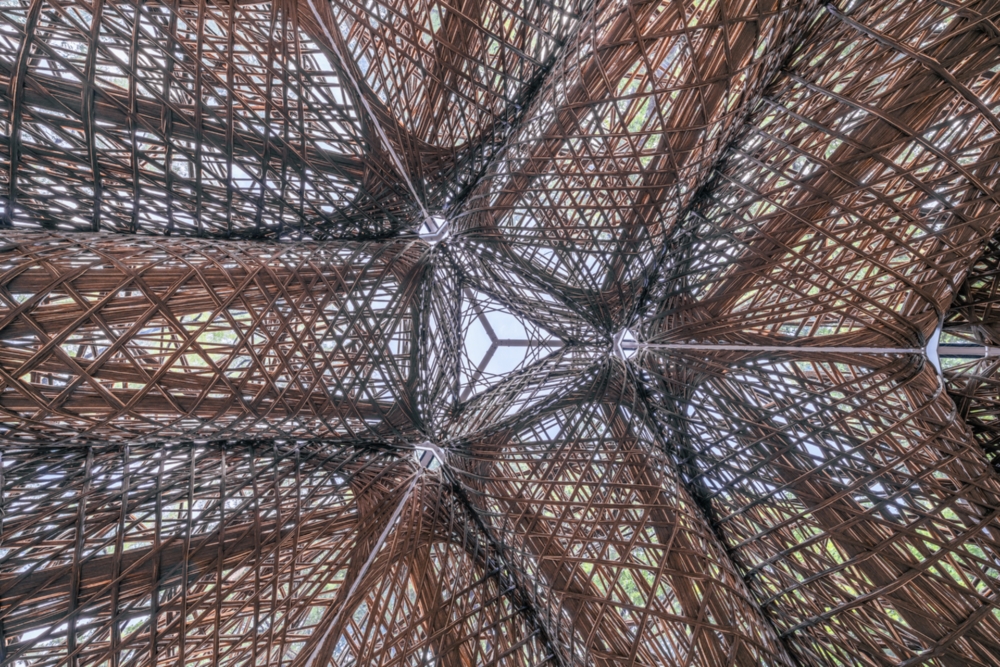
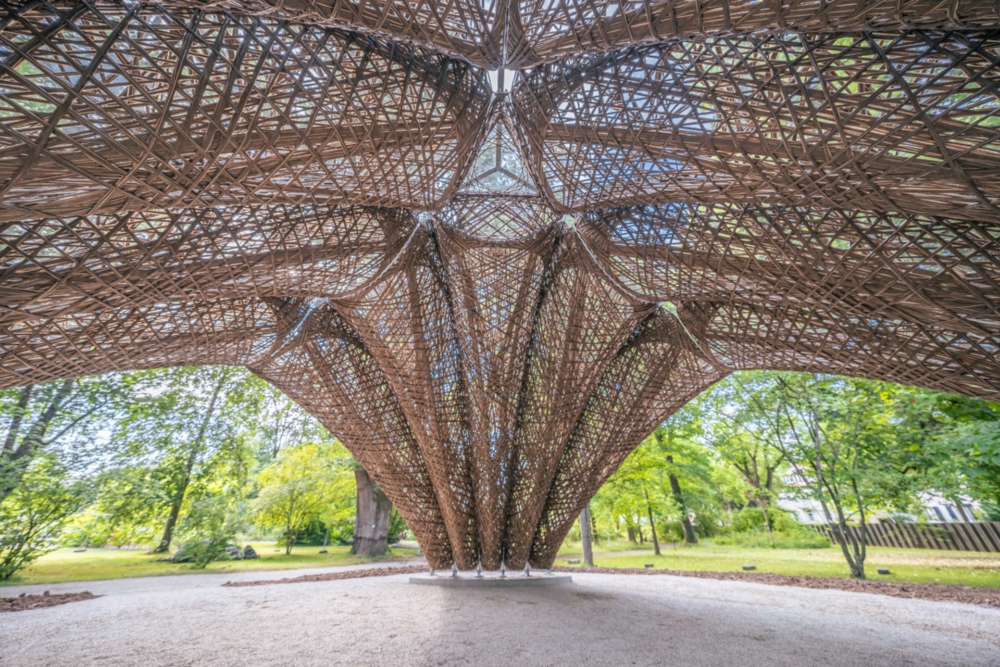
LivMatS Pavilion
The finished load-bearing structure weighs approximately 1.5 tons, spans 46 square meters, and is covered with a waterproof polycarbonate skin. This protective layer shields the flax fiber from UV radiation and moisture, safeguarding the material from weathering effects like rain or snow. The pavilion not only stands as a visually striking example of sustainable design, but it also meets German building codes and structural permit requirements, proving the viability of natural fibers for large-scale construction.
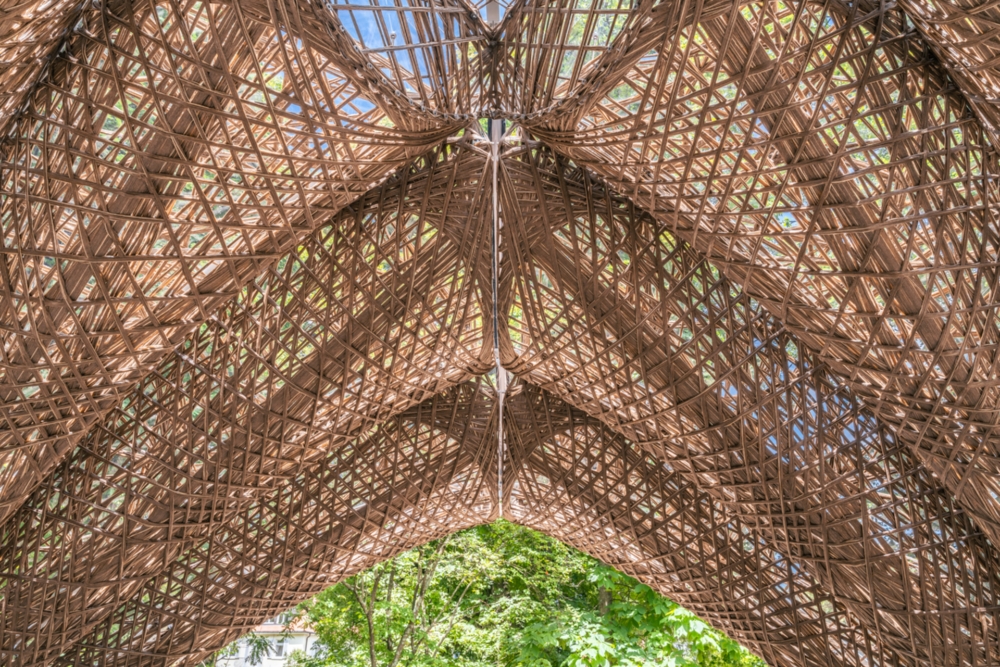
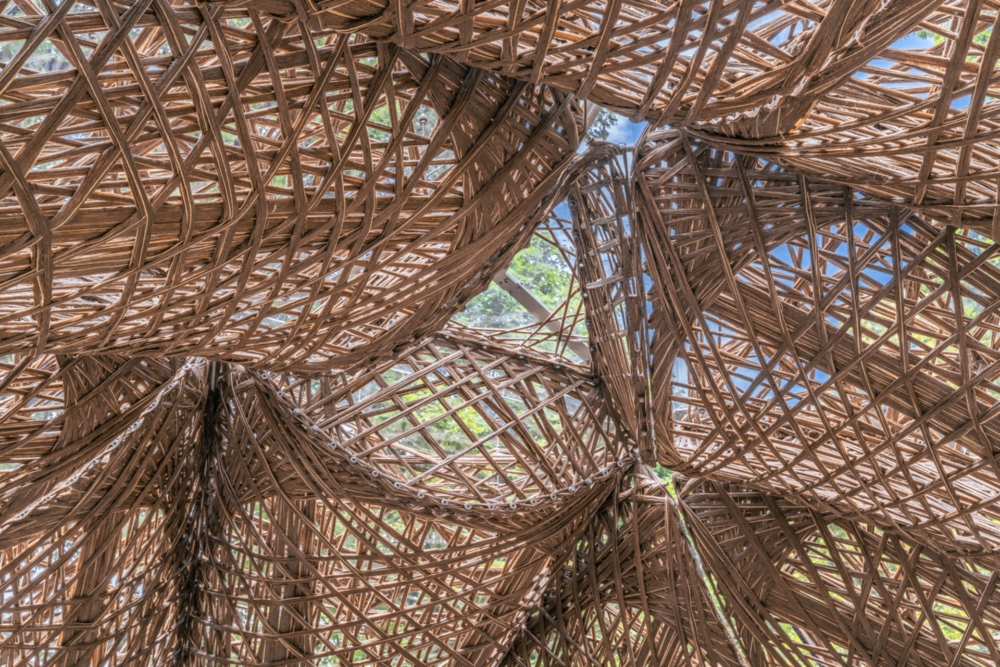
LivMatS Pavilion
For the next five years, the LivMatS Pavilion will function as an outdoor lecture hall at the University of Freiburg, supporting its “learning from nature in nature” approach to research and education. The project was developed as a collaboration between biologists from the LivMatS Cluster of Excellence at the University of Freiburg and an interdisciplinary team of architects and engineers from the intCDC at the University of Stuttgart.
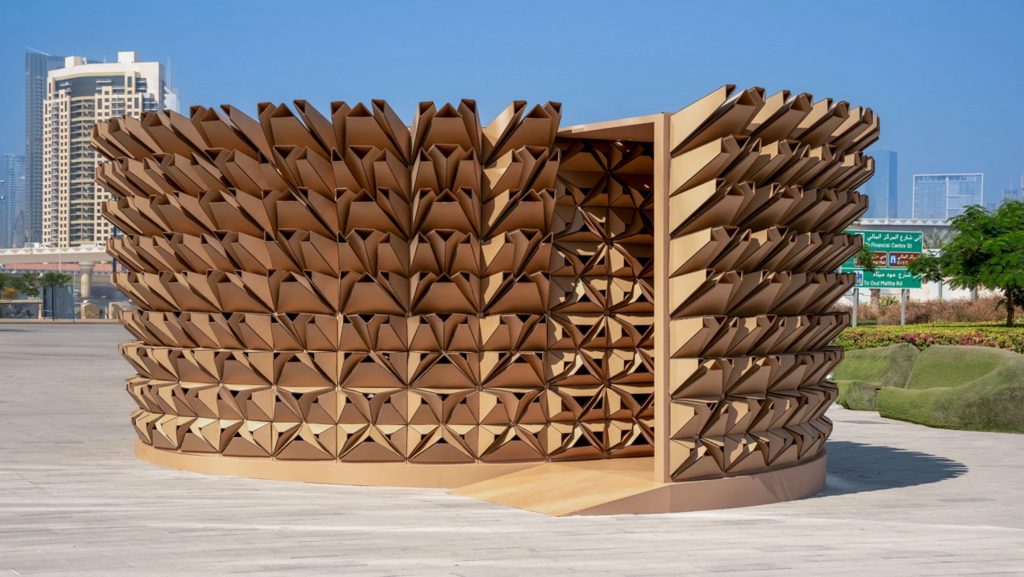
Enfold Pavilion by Deond
At Dubai Design Week, British designer Ross Lovegrove unveiled the Enfold Pavilion, the first completed project from Deond, the design practice he founded with creative director Ila Colombo after relocating to the UAE. The Enfold Pavilion is a striking structure enveloped in 945 hand-folded sheets of recycled cardboard, which form trapezoidal modules that wrap around a circular timber frame. The cardboard, designed using parametric software, was shaped to mimic the spiky exterior of a palm tree trunk and arranged to create triangular openings that allow natural light to filter into the pavilion throughout the day. This dynamic interplay of daylight, according to Colombo, gives the pavilion an ever-changing interior atmosphere.
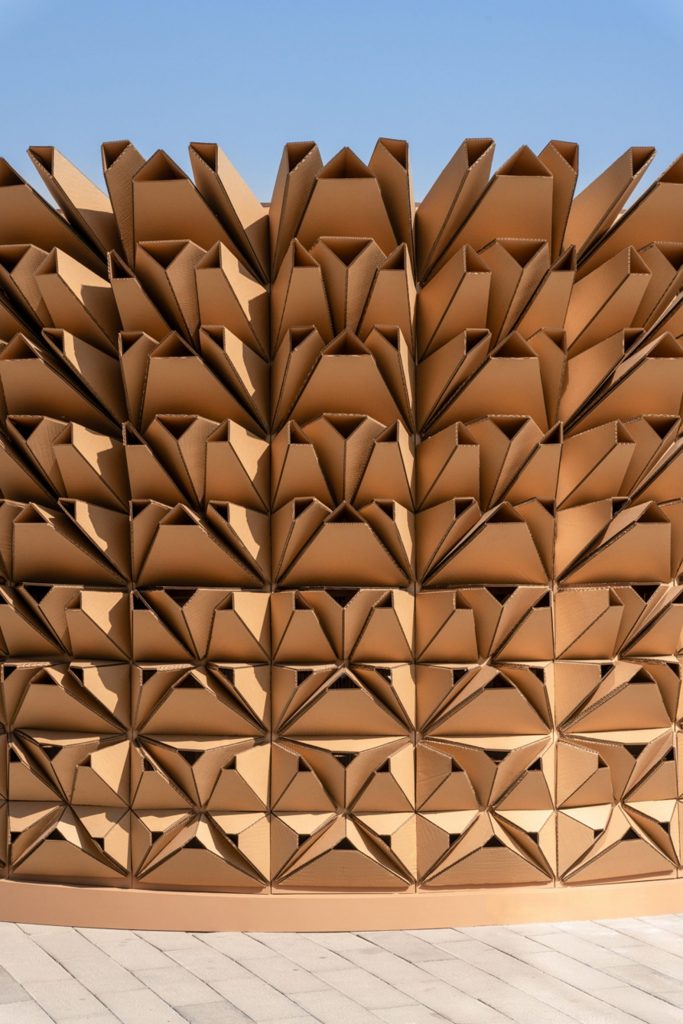
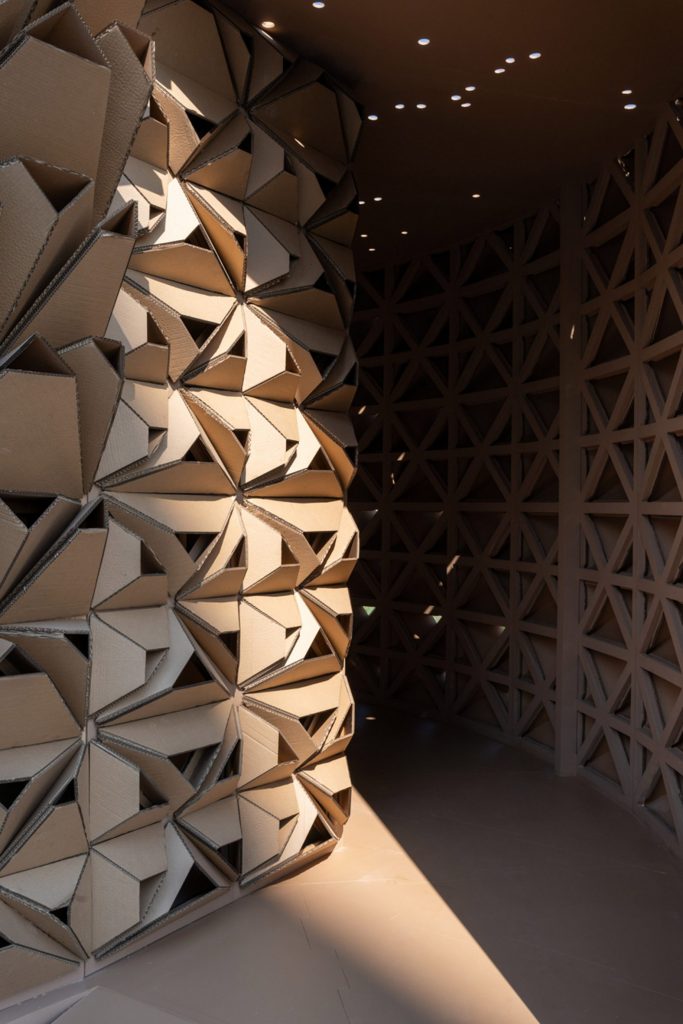
Enfold Pavilion by Deond
The Enfold Pavilion stands as an embodiment of Deond’s ethos—rooted in both biomimicry and technological innovation. Lovegrove and Colombo’s approach is informed by their desire to present a design language that feels native to the region. Inside the pavilion, the rough cardboard exterior gives way to a smooth, monochromatic interior, punctuated by natural light that enters through the cut-out modules. Suspended in the center is a Holistic Unified Garment (HUG) bodysuit, which features 3D-printed embellishments created through a new additive manufacturing process developed by Stratasys, an additive manufacturing company.
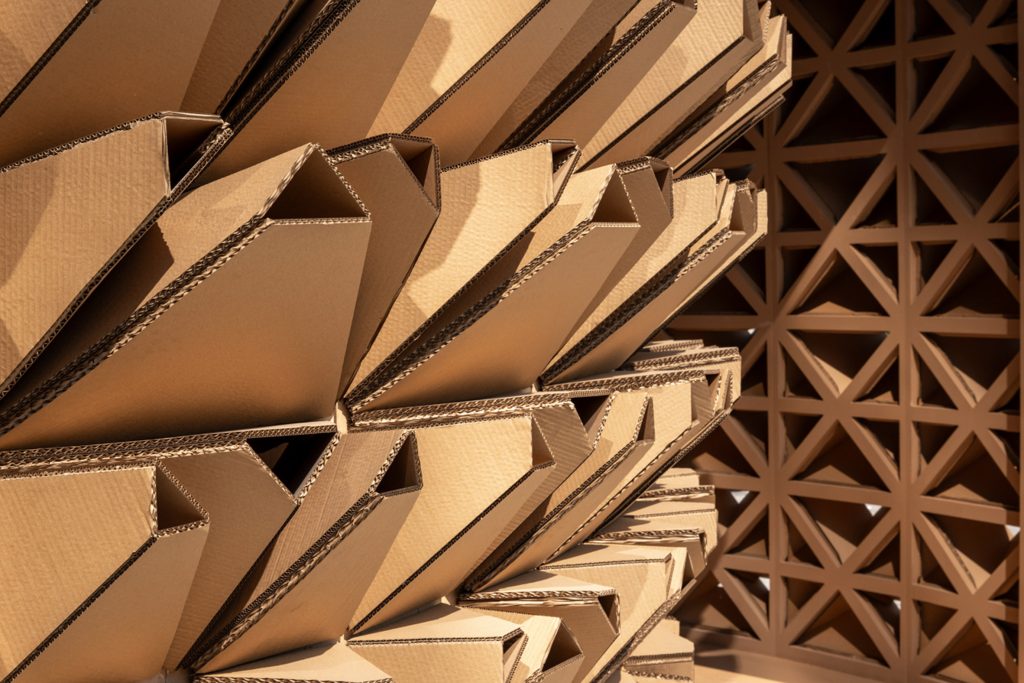
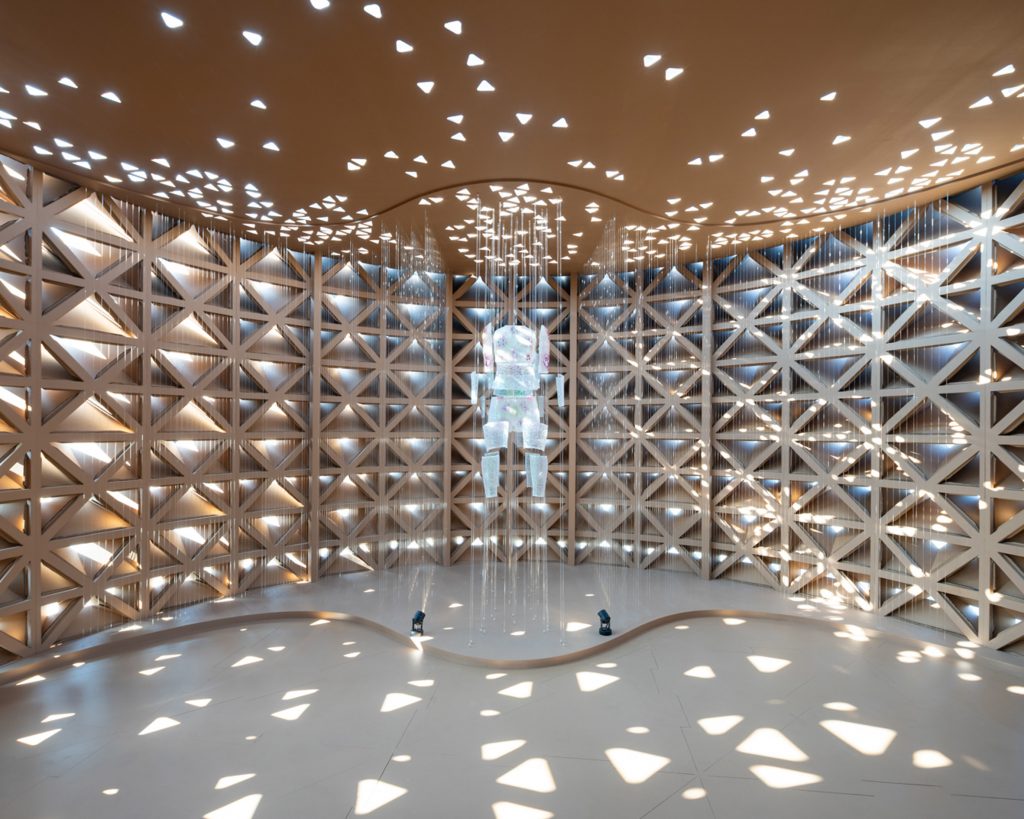
Enfold Pavilion by Deond
Although the pavilion was digitally designed, it was meticulously assembled by hand, with the cardboard modules folded by Colombo and Elselmy over three days. The cardboard was sourced from a local manufacturer in the UAE, furthering the project’s commitment to sustainability.
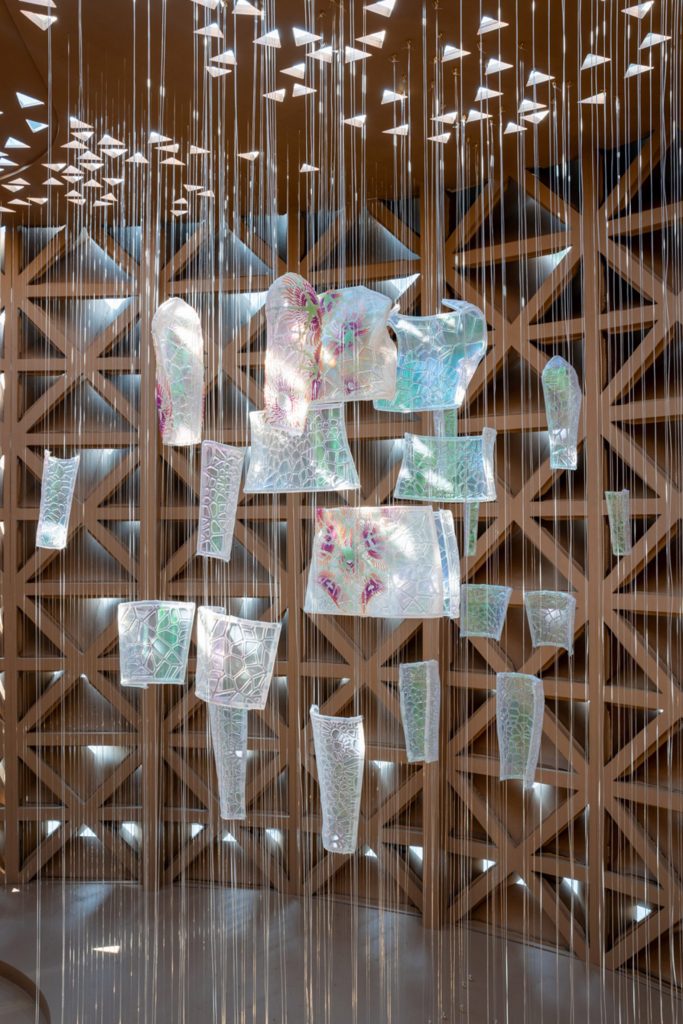
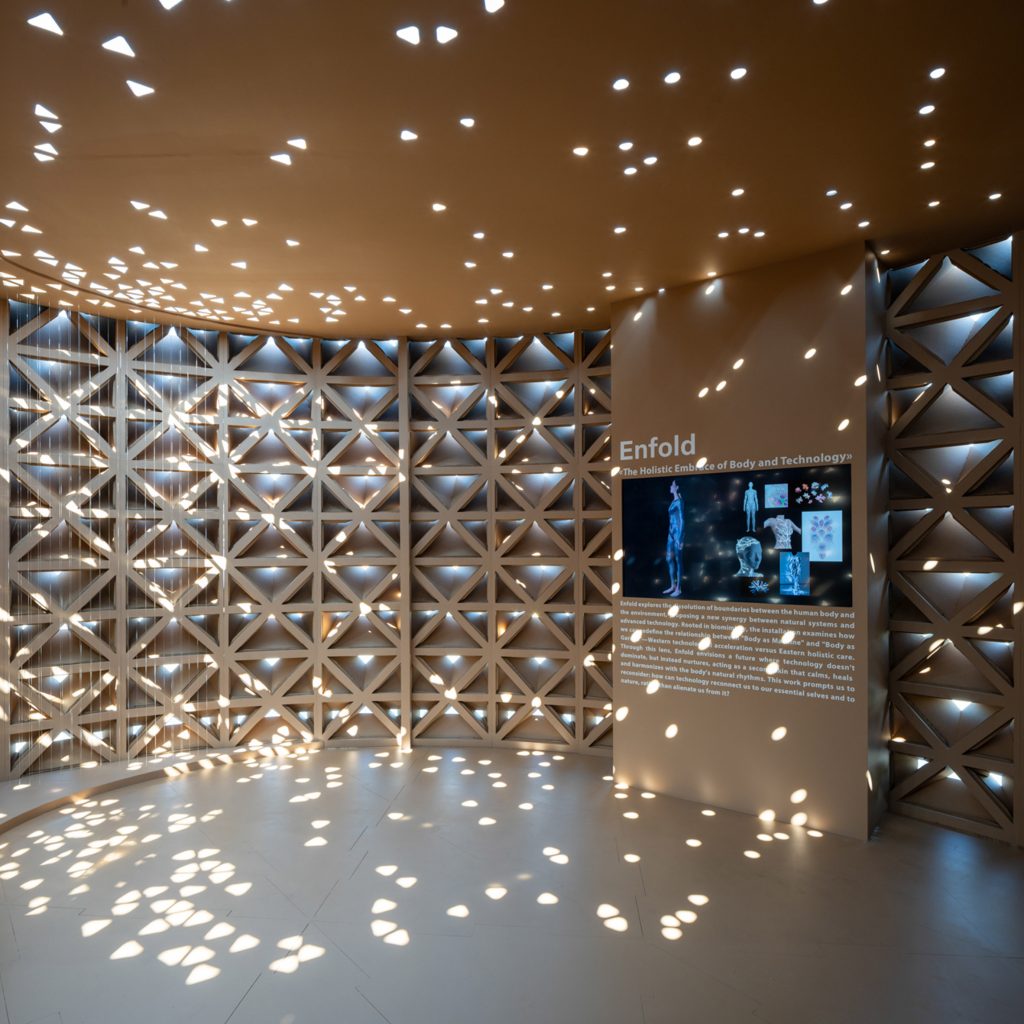
Enfold Pavilion by Deond
The pavilion marks a promising beginning for Deond, which aims to expand beyond product and installation design to take on larger-scale architectural projects. Currently, the studio is in discussions about potential projects in Saudi Arabia and the UAE, including ventures related to architecture and transportation.
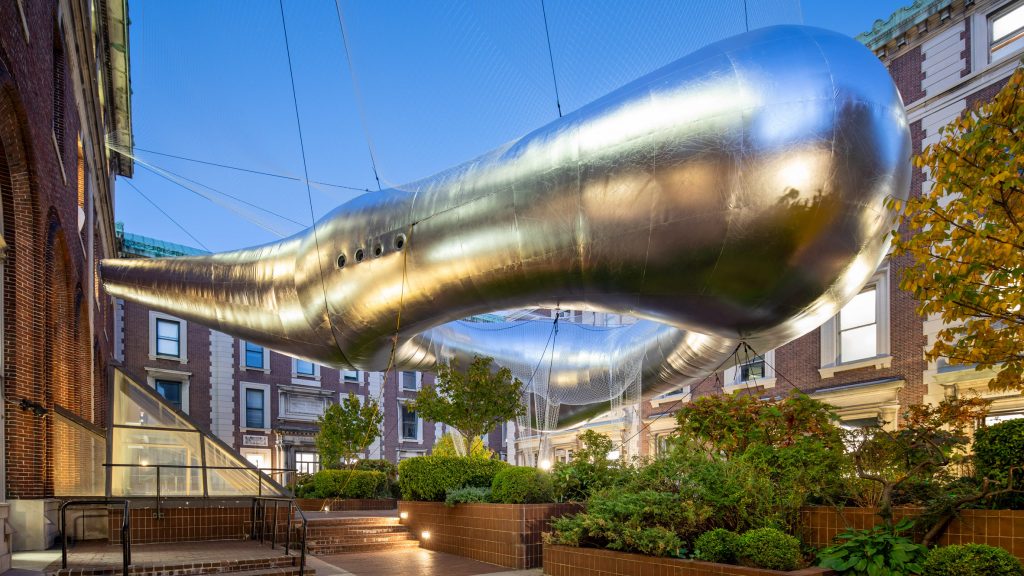
Installation at GSAPPA group of Columbia GSAPP professors and students has created a unique inflatable installation on the university’s campus, suspended between two iconic buildings, Avery Hall and Fayerweather Hall. The installation, known as the Cloud Pavilion, features a large, silver doughnut-shaped structure with seating made of nets, offering a dynamic, participatory space for students and visitors alike.
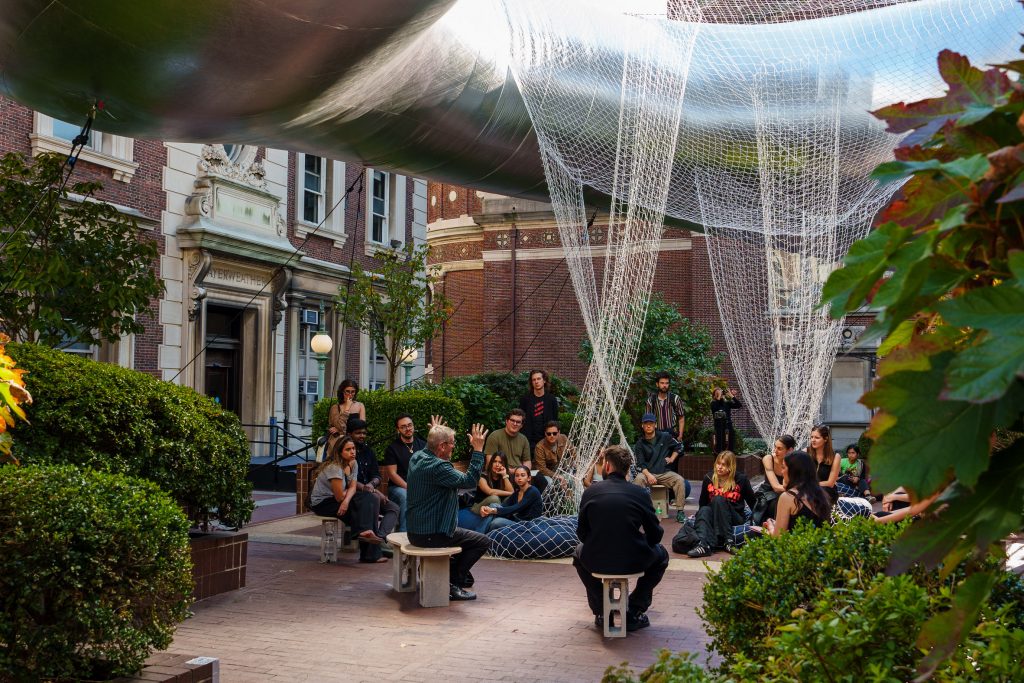
Installation at GSAPP
The Cloud Pavilion is a 66-foot-wide inflatable installation that encourages interaction and play within a public courtyard. Designed by professors Laurie Hawkinson and Galia Solomonoff, along with two teams of students, the pavilion was developed over the course of a Fall and Spring semester. Powered by electric blowers, it hangs suspended by 25 cables that stretch between the buildings and the plaza floor. At its center, a large net cascades through the opening, creating a flexible, adjustable seating area that visitors can modify, inviting them to engage with the space in a creative, collaborative way.
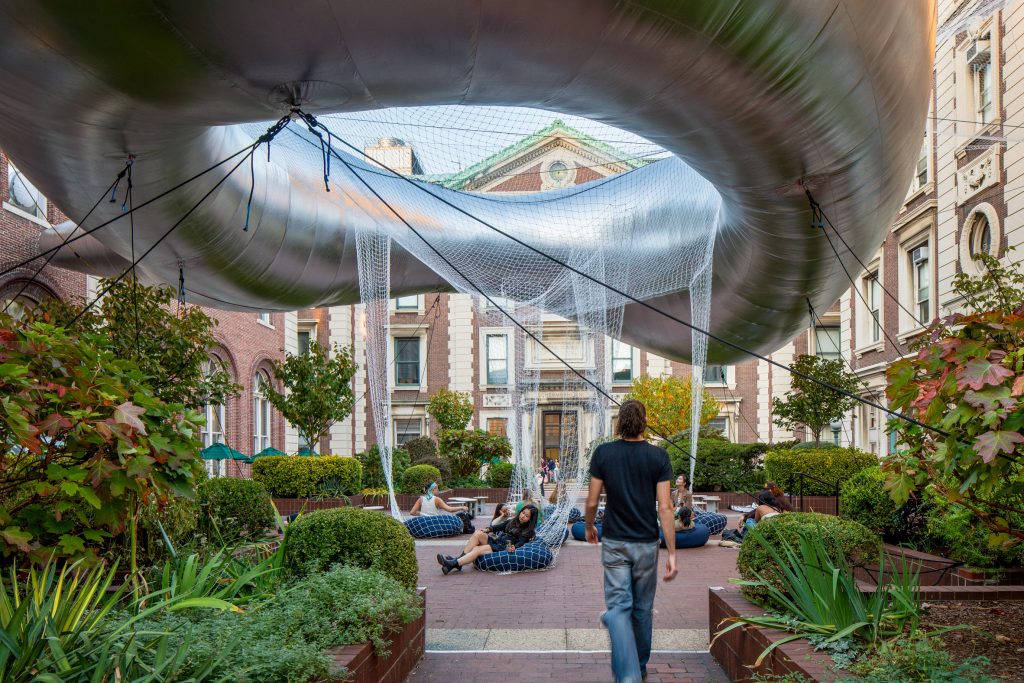
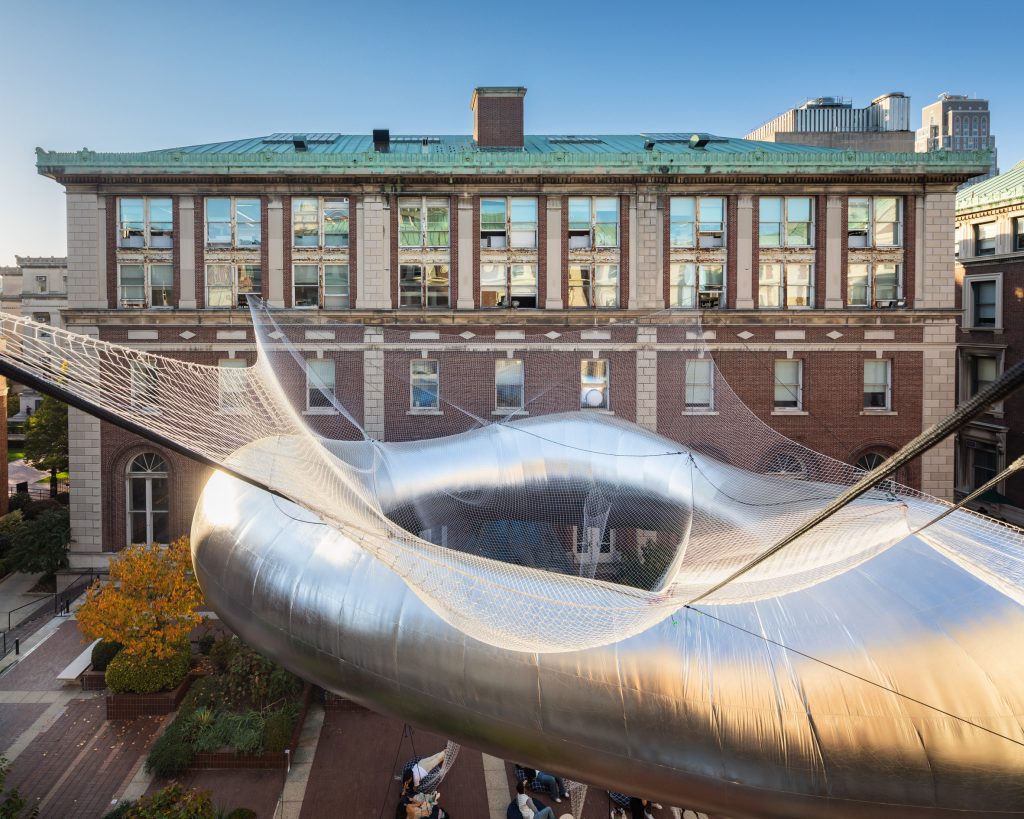
Installation at GSAPP
This installation serves as an exploration of human interaction in public spaces, emphasizing the interconnectedness of people through their collective use of the environment. The netted columns and movable cushions within the pavilion allow the public to curate their own experience, transforming the installation from a static object into a dynamic, ever-evolving communal space. Through this design, the Cloud Pavilion fosters collaboration and social interaction, bringing together the broader Columbia community in a shared experience.